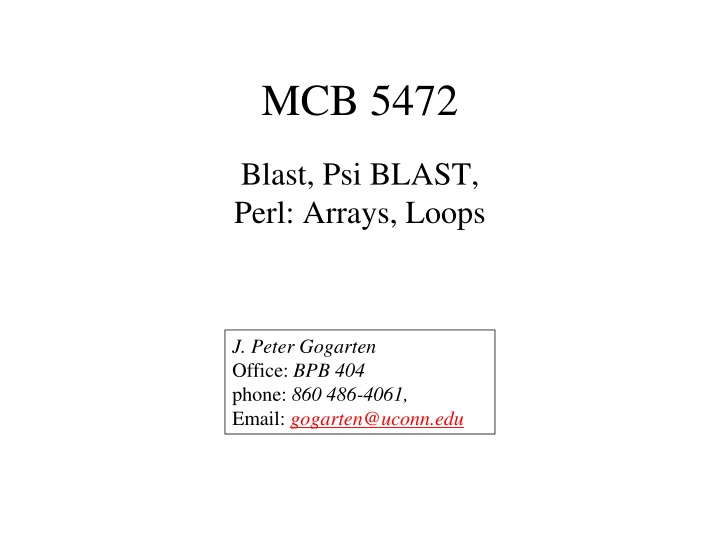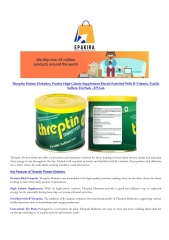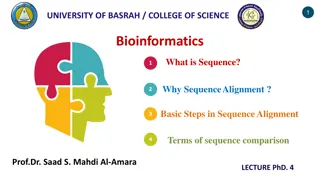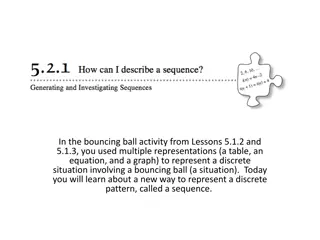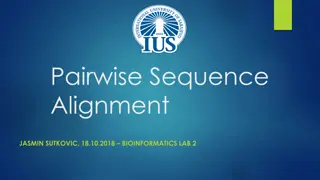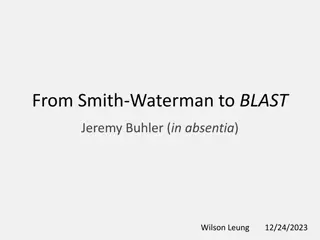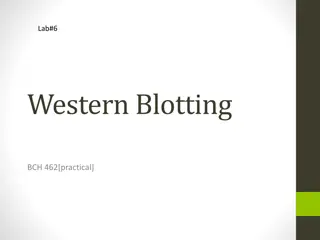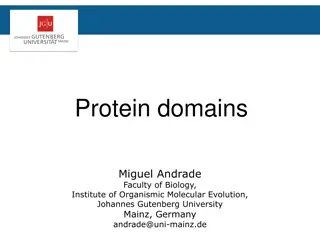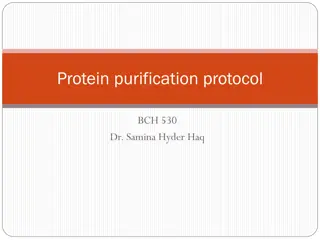Utilizing Psi-Blast for Protein Sequence Homology Detection
This content delves into the application of Psi-Blast - a powerful bioinformatics tool designed to detect homology among divergent protein sequences. It discusses concepts like E-values, significance, and the Psi-Blast model in detail. The potential of Psi-Blast in identifying structural homologs and its use in constructing position-specific scoring matrices are also explored. Through examples and explanations, this resource provides insights into how Psi-Blast can aid in the search for candidate genes and conducting multiple sequence alignments in bioinformatics research.
Download Presentation

Please find below an Image/Link to download the presentation.
The content on the website is provided AS IS for your information and personal use only. It may not be sold, licensed, or shared on other websites without obtaining consent from the author.If you encounter any issues during the download, it is possible that the publisher has removed the file from their server.
You are allowed to download the files provided on this website for personal or commercial use, subject to the condition that they are used lawfully. All files are the property of their respective owners.
The content on the website is provided AS IS for your information and personal use only. It may not be sold, licensed, or shared on other websites without obtaining consent from the author.
E N D
Presentation Transcript
MCB 5472 Blast, Psi BLAST, Perl: Arrays, Loops J. Peter Gogarten Office: BPB 404 phone: 860 486-4061, Email: gogarten@uconn.edu
E-values and significance Usually E values larger than 0.0001 are not considered as demonstration of homology. For small values the E value gives the probability to find a match of this quality in a search of a databank of the same size by chance alone. E-values give the expected number of matches with an alignment score this good or better, P-values give the probability of to find a match of this quality or better. P values are [0,1], E-values are [0,infinity). For small values E=P Problem: If you do 1000 blast searches, you expect one match due to chance with a P-value of 0.001 One should use a correction for multiple tests, like the Bonferroni correction.
Psi-Blast: Detecting structural homologs Psi-Blast was designed to detect homology for highly divergent amino acid sequences Psi = position-specific iterated Psi-Blast is a good technique to find potential candidate genes Example: Search for Olfactory Receptor genes in Mosquito genome Hill CA, Fox AN, Pitts RJ, Kent LB, Tan PL, Chrystal MA, Cravchik A, Collins FH, Robertson HM, Zwiebel LJ (2002) G protein-coupled receptors in Anopheles gambiae. Science 298:176-8 by Bob Friedman
Psi-Blast Model Model of Psi-Blast: 1. Use results of gapped BlastP query to construct a multiple sequence alignment 2. Construct a position-specific scoring matrix from the alignment 3. Search database with alignment instead of query sequence 4. Add matches to alignment and repeat Similar to Blast, the E-value in Psi-Blast is important in establishing matches E-value defaults to 0.001 & Blosom62 by Bob Friedman Psi-Blast can use existing multiple alignment - particularly powerful when the gene functions are known (prior knowledge) or use RPS-Blast database
Position-specific Matrix by Bob Friedman M Gribskov, A D McLachlan, and D Eisenberg (1987) Profile analysis: detection of distantly related proteins. PNAS 84:4355-8.
Query: 55670331 (intein) Psi-Blast Results link to sequence here, check BLink
PSI BLAST and E-values! Psi-Blast is for finding matches among divergent sequences (position- specific information) WARNING: For the nth iteration of a PSI BLAST search, the E-value gives the number of matches to the profile NOT to the initial query sequence! The danger is that the profile was corrupted in an earlier iteration.
PSI Blast from the command line Often you want to run a PSIBLAST search with two different databanks - one to create the PSSM, the other to get sequences: To create the PSSM: blastpgp -d nr -i subI -j 5 -C subI.ckp -a 2 -o subI.out -h 0.00001 -F f blastpgp -d swissprot -i gamma -j 5 -C gamma.ckp -a 2 -o gamma.out -h 0.00001 -F f Runs a 4 iterations of a PSIblast the -h option tells the program to use matches with E <10^-5 for the next iteration, (the default is 10-3 ) -C creates a checkpoint (called subI.ckp), -o writes the output to subI.out, -i option specifies input as using subI as input (a fasta formated aa sequence). The nr databank used is stored in /common/data/ -a 2 use two processors (It might help to use the node with more memory
To use the PSSM: blastpgp -d /Users/jpgogarten/genomes/msb8.faa -i subI -a 2 -R subI.ckp -o subI.out3 -F f blastpgp -d /Users/jpgogarten/genomes/msb8.faa -i gamma -a 2 -R gamma.ckp -o gamma.out3 -F f Runs another iteration of the same blast search, but uses the databank /Users/jpgogarten/genomes/msb8.faa -R tells the program where to resume -d specifies a different databank -i input file - same sequence as before -o output_filename -a 2 use two processors
PSI Blast and finding gene families within genomes use PSSM to search genome: A) Use protein sequences encoded in genome as target: blastpgp -d target_genome.faa -i query.name -a 2 -R query.ckp -o query.out3 -F f B) Use nucleotide sequence and tblastn. This is an advantage if you are also interested in pseudogenes, and/or if you don t trust the genome annotation: blastall -i query.name -d target_genome_nucl.ffn -p psitblastn -R query.ckp
The NCBI has released a new version of blast. The command line version is blast+ . The new version is faster and allows for more flexibility, both versions should be running it on the cluster. The new commands are equivalent to the blastall commmands:
The legacy_blast.pl script that is part of blast+ translates blastall commands into the blast+ syntax. E.g.: $ ./legacy_blast.pl megablast -i query.fsa -d nt -o mb.out --print_only /opt/ncbi/blast/bin/blastn -query query.fsa -db "nt" -out mb.out $ From the blast+ manual:
Old assignments: What is the value of $i after each of the following operations? $i=1; $i++; $i *= $i; $i .= $i; $i = $i/11; $i = $i . score and . $i+3; First make a guess, then test your prediction using a script.
#!/usr/bin/perl #-w my $i=''; print "\$i= $i\n"; $i = 1; print "\$i= $i\n"; $i++; print "\$i= $i\n"; $i *= $i; print "\$i= $i\n"; $i .= $i; print "\$i= $i\n"; $i = $i/11; print "\$i= $i\n"; $i = $i . "score and" . $i+3 ; print "\$i= $i\n"; $i = $i+3 . "score and" . $i; print "\$i= $i\n"; $i= $i= 1 $i= 2 $i= 4 $i= 44 $i= 4 $i= 7 $i= 10score and7 discuss and run test.pl with and without w flag
Discuss and run the hello_world script with variable hello_world_variable.pl
Discuss and run the hello_world script with variable and input hello_world_variable_input.pl
Old assignments: 4) If $a = 2 and $b=3, what is the type and values of the scalar stored in $c after each of the following statements: $c = $a + $b; $c = $a / $b; $c = $a . $b; $c = "$a + $b"; $c = '$a + $b'; First make a guess, then test your prediction using a script.
$c= 3 $c= 0.5 $c= 1 + 2 $c= $a + $b $c= 3 $c= 4 Run and discuss test2.pl
Write a short Perl script that calculates the circumference of a circle given a radius provided by the user.
Write a short Perl script that calculates the circumference of a circle given a radius provided by the user. The best way to find which module to use is google. You can search core modules at http://perldoc.perl.org/search.html?
Assignment for Monday (class 4) 1) Write a 2 sentence outline for your student project 2) Read chapter P5 and P12 conditional statements and on for, foreach, and while loops. http://korflab.ucdavis.edu/Unix_and_Perl/current.html Background: @a=(0..50); #This assigns numbers from 0 to 50 to an array, # so that $a[0] =0; $a[1] =1; $a[50] =50 3) Write perl scripts that add all numbers from 1 to 50. Try to do this using at least two different control structures. 4) Create a program that reads in a sequence stored in a file handed to the program on the command line and determines GC content of a sequence. Use class3.pl as a starting point.
5) For the following array declaration @myArray = ('A', 'B', 'C', 'D', 'E'); what is the value of the following expressions: $#myArray length(@myArray) $myArray[1] $n=@myArray r everse (@myArray) 6) Create a program that reads in a sequence stored in a file handed to the program on the command line and determines GC content of a sequence. Details in class3.pl. See the challenge!
Go through class3.pl script. Coding sequences example: http://www.ncbi.nlm.nih.gov/protein/AEE95833.1 Ctrl click open CDS in new window. If time do chomp_example.pl (also in scripts)
